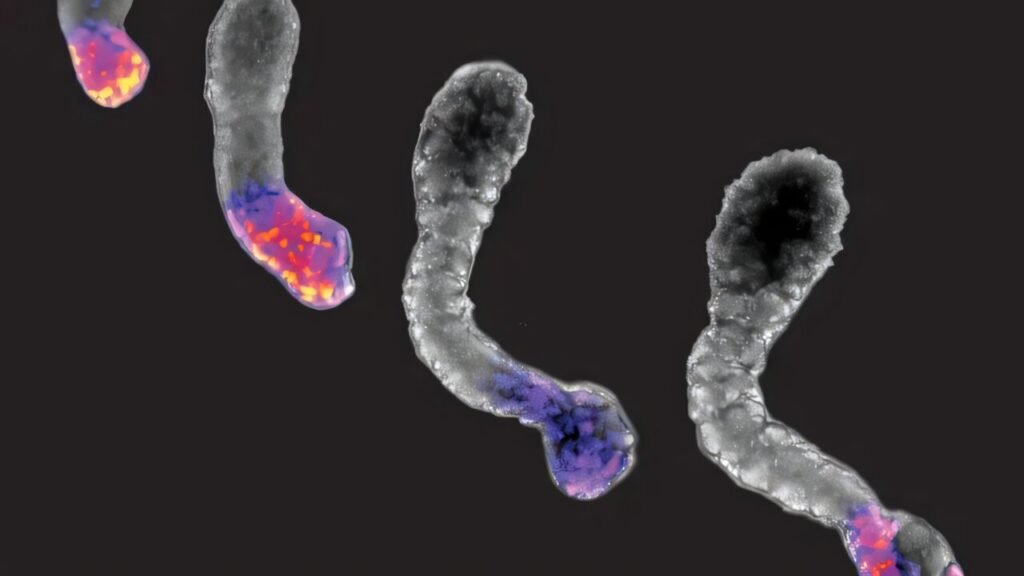A recent study conducted by researchers at the University of Dundee has shed light on a genetic mutation that is not only linked to cancer but also affects how the human body develops in the womb. The mutation, found in a gene called NOTCH1, is known to be prevalent in patients with T-cell acute lymphoblastic leukemia (T-ALL). However, the study reveals that this mutation can disrupt the formation of segments that eventually develop into the bones and muscles of the skeleton during early development.
Led by Professor Kim Dale and her team at the University’s School of Life Sciences, the research demonstrates that the NOTCH1 mutation can lead to conditions such as congenital scoliosis, a condition characterized by a sideways curvature of the spine. Published in the journal Genes & Development, the study showcases how the mutation impacts the timing and organization of the body’s segments, known as somites, which play a crucial role in the development of the spine, muscles, and skeleton.
Using human stem cells and 3D models that mimic early embryos, the researchers found that the mutation causes a build-up of a key protein in cells, disrupting the body’s internal timing system and leading to abnormalities in somite formation. This discovery marks the first time that this specific mutation has been shown to interfere with the basic shape of the human body during development.
Dr. Hedda Meijer, a Senior Postdoctoral Research Assistant involved in the study, highlighted the implications of somite formation malfunction, emphasizing how it can result in musculoskeletal deformities. By gaining a better understanding of how altering the degradation rate of Notch intracellular domain levels affects somitogenesis, researchers hope to provide insights into musculoskeletal deformities, T-cell acute lymphoblastic lymphoma, and other diseases associated with aberrant Notch signaling.
In addition to uncovering this new link, the research led to the development of specialized lab tools through CRISPR gene editing of stem cell lines. By precisely modifying a single letter of the Notch DNA sequence in stem cells to mimic the mutation found in patients, the team was able to observe its effects on early human development.
These CRISPR-edited stem cells have the potential to be transformed into various human cells and tissues, making them a valuable resource for studying the role of Notch in spinal conditions, developmental tissue contexts, and diseases linked to faulty NOTCH1 signaling. The findings from this study could pave the way for a deeper understanding of a range of conditions, from musculoskeletal disorders like scoliosis to cancers involving abnormal cell communication, ultimately contributing to the development of new diagnostic and treatment approaches.
For more information, the study titled “NOTCH1 S2513 is critical for the regulation of NICD levels impacting the segmentation clock in hiPSC-derived PSM cells and somitoids” can be accessed in the journal Genes & Development. This groundbreaking research was conducted by the University of Dundee, providing valuable insights into the intricate relationship between genetic mutations, developmental processes, and disease pathways.


